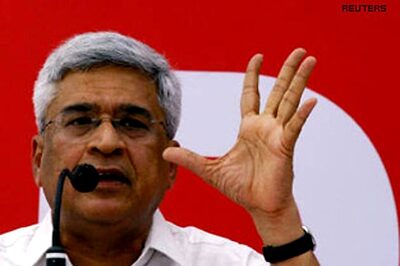
views
A 65-year-old man from Delhi, who suffered at least 100 mini-strokes in a single week, underwent a life-saving surgery that dramatically improved his condition with no further attacks. Doctors used intracranial stenting to clear a blockage in the right internal carotid artery in his brain.
The man was hospitalised after he suffered transient ischaemic attacks (TIA), or mini-strokes, more than 100 times in one week. He had recurrent episodes of weakness in his right arm and leg, as well as difficulty speaking and understanding for the past six months.
According to a report published in Times of India, the patient — Niwash Johar from Hapur — had visited several doctors but no one could identify the problem. Doctors at BLK Max Super Specialty Hospital said the man’s blood vessels had narrowed due to smoking and blood supply was only 90 percent to the right side while the left side was blocked. Hence, the deficiency of blood and oxygen to the brain was causing repeated strokes.
“Initially, these episodes would occur 1-2 times every week and lasted less than five minutes but gradually, the frequency increased to multiple episodes per day along with increase in duration of these attacks, which used to last for more than 10-15 minutes,” Dr Vinit Banga, associate director of neurology and head neurovascular intervention of BLK Max Super Specialty Hospital, told ToI.
Doctors said it is important for stroke patients to consult experts so that their symptoms can be identified and the underlying cause treated.
Mini-strokes: Symptoms and triggers
Mini-strokes, or minor strokes, are medically known as transient ischaemic attacks triggered by a temporary disruption in blood flow to a part of the brain. These episodes typically last for a short duration, but can often precede major strokes.
They require prompt medical attention and, if left unaddressed, can lead to long-term disability or, in severe cases, even death. Symptoms include:
- Weakness, numbness or paralysis in the face, arm or leg, typically on one side of the body
- Slurred or garbled speech or difficulty understanding others
- Blindness in one or both eyes or double vision
- Vertigo or loss of balance or coordination
Dr Banga said narrowing of blood vessels can be caused due to diabetes, hypertension, smoking, poor lifestyle as well as high cholesterol. The expert added that though the attacks can be treated with medicines and better lifestyle choices as well as risk factor control, stenting is needed in cases when the blood vessels are too narrow.
According to another news report, there are several triggers and risk factors associated with mini-strokes:
- Atherosclerosis: The buildup of fatty deposits in the arteries can restrict blood flow to the brain
- High blood pressure: Hypertension is a significant risk factor for stroke, both major and mini-strokes
- Diabetes: Poorly managed diabetes can damage blood vessels, increasing the risk of TIAs
- Smoking: Tobacco use is linked to a higher likelihood of mini-strokes
- Obesity: Being overweight contributes to hypertension and other stroke risk factors
- Atrial fibrillation: An irregular heart rhythm can lead to blood clots, which may trigger TIAs.
Experts said in Johar’s case, he was asked to go in for angiography for a proper diagnosis. Doctors then opted for intracranial stenting, which is an innovative intervention designed to open blocked blood vessels in the brain.




















Comments
0 comment